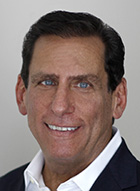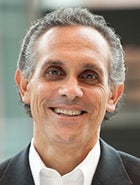
In last year’s December edition, we argued the mood of the moment when people are making predictions influences what they see for the coming year.
Late in 2018, as we reached out to communicators to prognosticate for 2019, the headlines were blaring about a lack of trust in large tech brands. Just prior to Thanksgiving 2018, The NY Times published a 5,600-word exposé about Facebook. The article went behind the scenes, discussing all sorts of unsavory practices stemming from evidence of Russian meddling via Facebook in the U.S. 2016 presidential election. It revealed Facebook’s extensive lobbying efforts to cover its guilt, as well as hiring a PR firm to find dirt on rivals. Mark Zuckerberg and Sheryl Sandberg were pilloried. Initially they denied the article’s accusations. A few days later they obliquely admitted guilt in several areas.
It’s little wonder then that many of the 25 people we asked to make predictions for 2019 concentrated on the importance of trust and how PR could help win it back.
While you’ll see trust mentioned throughout the 2020 predictions, mostly it is viewed as an underlying value that has long been critical to effective PR.
The theme that arises more consistently in the 2020 predictions is personalization. For example, technology’s ability to create personalized experiences for stakeholders. Similarly, the importance of personalizing pitches to media is noted. Our first prediction, from Gene Grabowski of kGlogbal, anticipates more personal service.
Is this personalization thrust a reaction to the creeping influence of AI on PR? Or the ability through technology to issue millions of pieces of email to media and other stakeholders with several mouse clicks? A push back against social media bots? Perhaps. Does it have anything to do with the recent impeachment inquiry hearings, which made stars of several members of the faceless bureaucracy? We’d not hazard a guess, but we encourage you to do so. Drop our editor a note and let him know your thoughts. In the meantime, we trust you will find this year’s predictions is useful and interesting.
Agencies
Agencies and the Personal Touch
 Gene Grabowski, Partner, kGlobal
Gene Grabowski, Partner, kGlobal
Corporations are growing weary of millennial and Gen Z consultants “handling” them. They will look for more face-to-face interaction and personal service in 2020. Increasingly, even GenX and millennial clients are grousing about how little personal service and interaction they get from PR and management consultants who meet with them once, then seem to disappear as younger, less-experienced colleagues do much of the account work. Advertising and PR pros who show up for in-person meetings and provide high-end strategic counsel and first-rate work increasingly will win the lion’s share of business, regardless of their firm’s size.
Agencies and the Rise of In-House PR
 Steve Cody, Founder/CEO, Peppercomm
Steve Cody, Founder/CEO, Peppercomm
We’ll see more corporations expand in-house marketing and communications teams. This will increase pressure on agencies to become strategic counselors as opposed to mere tacticians. In addition, PR firms will be challenged to provide business results to justify their value-add.
Artificial Intelligence

Mark Weiner, Chief Insights Officer, Cision, Chair, IPR Measurement Commission
Applications for AI in PR research and evaluation will expand while claims of AI will explode. Amidst this phenomenon, practitioners may be surprised to learn that rather than freeing them from mundane tasks, the technology requires a serious investment in human resources to train and manage the AI to deliver relevant content, accurate data and actionable insights. 2020 will be a year of discovery as the professional communicators who buy in to AI realize that reliable “insights engine” automation is overstated and that no technology replaces human expertise.
 Suzanne Block, Director of Emerging Technology Group Manager, West Coast Operations Merritt Group
Suzanne Block, Director of Emerging Technology Group Manager, West Coast Operations Merritt Group
The hype of AI was “enough” to generate attention and newsworthiness. In 2019, use of the word “AI” in marketing was ubiquitous, making differentiation hard.
In 2020, organizations that want to rise to the top of the AI news cycle will be forced to take a stance on how their AI technology not only incorporates privacy, scalability and democratization for non-data minded skillsets, but also paint a picture of how it will change the way business is done. This process will stretch us to tell stories in a more unique way.
 Andrew Cross, SVP, PR, Partner Walker Sands
Andrew Cross, SVP, PR, Partner Walker Sands
AI will bring practical utility to PR roles. Solutions increasingly are automating the process of content creation, which has big implications for media relations pros as well as corporate communicators. There also are AI-backed tools for real-time crisis monitoring. Several communications-measurement vendors tout AI-embedded solutions.
In 2020, AI will move from a futuristic technology on the horizon to a component solution incorporating many of the tools PR professionals engage with every day.
Crisis
Crisis and Employee Activism

Karen Mateo, CCO, PRSA
In 2019, we saw a spike in employee activism as workers more frequently (and with better organization) voiced complaints, expressing frustration with company policies and practices. This has resulted in an increased focus on internal communications and employee engagement to ensure a wide variety of opinions is being heard and company values are respected. Employers need to be better prepared for when a crisis like this inevitably arises.
Communicators will be required to play an even greater role in helping leadership manage through what can be a difficult situation, but one that can also result in positive outcomes and improved business practices.
Steve Cody, Peppercomm
2020 will see a rise in agency employee activism. More agency employees will insist CEOs resign business because of ethical or moral dilemmas. Case in point: Edelman’s recent resignation of The Geo Group, the private prison operator and contractor for ICE.
Crisis Growth and Reputation
 Esther-Mireya Tejeda, SVP, Head of Corporate, Communications & PR Entercom
Esther-Mireya Tejeda, SVP, Head of Corporate, Communications & PR Entercom
Crisis communications and reputation management will become increasingly important areas of expertise, likely accompanied by more in-house roles dedicated exclusively to corporate reputation management as part of broader communications teams.
We have seen major, global brands across industries experience tremendous disruption due to events that quickly gained notoriety through social media. There is a growing cultural shift toward social media activism, also known as ‘cancel culture,’ with hashtag campaigns powered by the speed and influence of social media that push for boycotts of brands that have behaved in a way that is misaligned with consumer values and principles.
Increasingly, communicators will be tasked with gatekeeping and culture testing to prevent incidents like these, and keep brands true to their mission statements and consumer expectations.
Crisis and Regulation
Gene Grabowski, kGlobal
Crisis management teams are in for a sizable boost in business. Across the board, state and federal regulatory bodies will be more strictly enforcing legacy regulations and creating new ones to meet challenges. Vocal consumers and activist groups increasingly are concerned with reducing risk and exercising more control over corporations.
While some agencies that have President Trump’s attention – such as the EPA and the Department of Education – will be cutting back on regulation, the FDA, USDA, Consumer Product Safety Commission, the Federal Trade Commission and the Department of Transportation will be cracking down on companies whose products and services appear to be creating risk for consumers. This will be especially true for the as-yet-unregulated cannabis and CBD oil industries, children’s cribs, sleepwear and toys, processed foods and meat, and drugs of all kinds.
This will mean more companies for the first time will be signing on to create crisis communications and reputation-management plans – many before the end of the first quarter.
Crisis and Organizational Structure
 Kevin Elliott, Managing Director US Risk+Crisis Communication Practice Hill + Knowlton Strategies
Kevin Elliott, Managing Director US Risk+Crisis Communication Practice Hill + Knowlton Strategies
There is a trend to make organizations flatter and less hierarchical. While flattening an organization makes for better collaboration and engagement of the breadth of talent easier, the same instinct will make incident response more difficult in some cases. If an organization is deepening a flattened culture to improve business processes, it will be necessary for leaders in that same organization to be counterintuitive in incident response planning. An effective incident response team is necessarily hierarchical and, to a degree, siloed. Look for the ability of flatter companies to maintain a counterintuitive structure for effective incident response.
Crisis and Gen Z
Kevin Elliott, Hill+Knowlton Strategies
I’ve long been anticipating the arrival of Gen Z employees in the workplace. It will create a number of interesting dynamics, not the least of which is that they reportedly are less inclined to take risks. I’m unsure whether that means they will contribute to more safety or fewer incidents. It will be interesting to have more voices in the room with different calculations about risk and reward. We could very well see this new generation of workers have a decidedly more calming influence on the conversation around incident management and mitigation.
Diversity, Inclusion & Equity
 Charlene Wheeless, Principal VP, Global Corporate Affairs, Bechtel Corporation
Charlene Wheeless, Principal VP, Global Corporate Affairs, Bechtel Corporation
Employees will hold their companies more accountable for real, visible, and sustainable change when it comes to diversity, inclusion and equity. Employees will begin to vote with their feet in companies and industries that just don’t get it. We are in an era of belonging. Inclusion is no longer enough. People will begin to demand the freedom to bring their authentic selves to work each day.
Steve Cody, Peppercomm
More clients will demand agencies provide full transparency about their diversity and inclusiveness programs. And they will be held far more accountable. Thankfully and, at long last, D&I finally will become table stakes for agencies. And I’d like to believe the PR world will pay more attention to better representing our increasingly diverse country.
Ethics and the Elections
 Michael Lewellen, VP, Marketing & Communications, University of Portland
Michael Lewellen, VP, Marketing & Communications, University of Portland
During the 2020 presidential election year there will be a hot market for academically credentialed, media-trained, thoughtful experts on critical topics. And what better place to find that expertise than at our institutions of higher learning? Leading the list of frequent topics will be ethics. Pointed analysis of ethics, honesty and moral formation will be needed in nearly all election coverage. The highest demand will be in the home markets of colleges and universities.
 Neil Foote, President, Natl Black PR Society
Neil Foote, President, Natl Black PR Society
As Bette Davis said in All About Eve, “Fasten your seatbelts. It’s going to be a bumpy night.” Well, 2020 is going to have many bumpy nights. Corporations, brands and influencers will find themselves in the midst of a contentious, divisive period...where they will be struggling to get their messages heard above the cacophony of headlines rooted in political strife. PR veterans might look back at the tumultuous times of the late 1960s when politics, race and an anxious mood reigned over the country like a thick morning fog. In 2020, PR pros will have to develop strategies that fine tune messaging to reach their targeted audiences in creative and engaging ways. Adding a smart, fun, powerful social media strategy where stills and videos combine to create a compelling story on Instagram, Twitter, Facebook and YouTube must become essential components to get above the noise – and engage customers who will be looking for relief from the political rhetoric.
Finance
 Rick Gould, CPA, J.D., Managing Partner, Gould+Partners
Rick Gould, CPA, J.D., Managing Partner, Gould+Partners
The PR M&A field shows no sign of slowing in 2020. Expect a surge in new deals…PR firm owners should consider selling sooner rather than later…as it takes up to a year to identify a buyer and facilitate a quality transaction. Buyers are angling for strategic acquisitions ($3mill-$10 mill) as well as bolt-on deals ($1mill-$3mill). Bolt-on acquisitions increasingly are attractive to buyers because they fill a specific and immediate need — such as online analytics and influencer marketing — and can be completed relatively quickly. PR firms specializing in healthcare, financial services, consumer and tech will hold special appeal for buyers, due to their high-growth potential. Ditto for public affairs firms, in light of what’s expected to be a furious election. Demand for valuations will grow. PR firms still suffer from too much over-servicing. Look for a much sharper focus on utilization and human capital.
Healthcare

Gil Bashe, Managing Partner, Global Health Finn Parters
In the 2020 presidential election candidates will find common ground in attacking the drug-development sector on medication costs. Don’t expect one of this nation’s great innovators to take continued policy blows lying down. Pundits always seek easy answers to complex healthcare cost issues. Biopharma is an easy mark; however, if healthcare costs are a whopping 18 percent of GDP, drugs make up only 14 percent of that. What’s wrong with this picture?
Along with political campaign sound bites, expect biopharma and medical device trade associations…to be front-and-center in telling how they benefit society and contribute to cost containment. Can we afford Alzheimer’s? How about epidemic-level diabetes? Just as patients with unmet medical needs won’t be silent, the industry will find its voice.
Influencers
Michael Lamp, SVP, Digital, Hunter
The saturation point for influencer marketing is somewhere in our collective rear-view mirror. But that doesn’t mean the tactic is any less valuable; it just means we’ve got to be a lot smarter about how we do it. Selfies with overly nebulas ‘#brandpartner’ hash tags are proving less and less effective (not to mention in violation of FTC guidelines on disclosure). We mustn’t settle for inauthentic, transactional efforts with influencers and creators. Just like the ‘old school’ practice of managing relationships with editors, influencer partnerships should be groomed. At the executional level, we need to look for unexpected ways to integrate influencers into brand storytelling vs. simply using them to distribute messages that don’t reflect their personal brand(s).
 Allison Fitzpatrick, Partner, Davis & Gilbert, LLP
Allison Fitzpatrick, Partner, Davis & Gilbert, LLP
Throughout 2020, the FTC will continue to bring actions against fake reviews, sponcon and other fraudulent indicators of social media influence. In response to mounting pressure from Congress, 2020 will see the FTC and the Children’s Advertising Review Unit take a closer look at influencer marketing directed to children, including some of the most famous child influencers. Everyone’s focus in 2020, however, will be on virtual/CGI influencers – as regulators try to figure out how they fit into the legal landscape and, specifically, how the law applies to them.
Internal Communications
 Chris LaPlaca, SVP, Corporate Communications, ESPN
Chris LaPlaca, SVP, Corporate Communications, ESPN
Companies will increasingly recognize the importance of internal communications. While we may not always be able to control the external narrative in any given moment, working hard to ensure employee alignment around your organization’s mission and vision is absolutely achievable, and critical in turbulent times.
Measurement
Mark Weiner, Cision, IPR Measurement Commission
The walls between marketing and PR will continue to fall as data-driven campaigns enable more holistic marketing and communication decision-making, planning and evaluation. For those who seek to optimize marketing’s ROI, 2020 will be glorious. And for those who view PR as more than just marketing (it is) and wholly distinct from marketing (it is not), they will need to reinforce and quantify PR’s unique contribution to the enterprise to validate the wisdom of management’s investment.
Karen Mateo, PRSA
If data isn’t your best friend already, you better be prepared to spend a lot more time together in 2020. As the quality of data communications professionals have access to gets more sophisticated, so does our ability to make smarter decisions based on sound analytics. Highly customized campaigns that can be measured more effectively will result in better experiences for consumers and demonstrate the value of PR in driving successful business outcomes. Audiences are becoming harder to reach and I expect to see even more personalization in our messaging using the wealth of data we now have access to.
Media and Media Relations
 John Conrad, EVP/Partner, Merritt Group
John Conrad, EVP/Partner, Merritt Group
PR pros will continue to draft press releases, but journalists will push for short, provocative story ideas with supporting content. Press releases won’t disappear, but they shouldn’t be the metric of a successful PR program.
I hear this during PR proposal meetings: “We want to leverage your media contacts to drive awareness for our executives, company, and solutions.” Wrong. Media relationships are critical, but if you have nothing interesting to say, you will be talking to yourself. Your media “friendlies” may take a briefing, but if there isn’t a story, they won’t write. Leverage PR to help build compelling storylines and then provide the right validation. That’s what the media wants. Creativity and validation are critical. That will be true in 2020.
 Michael Smart, Principal, SmartPR
Michael Smart, Principal, SmartPR
In 2020, sophisticated media relations teams will give up fighting in the crowded mosh pit for fleeting coverage from the usual suspects in the old media. Instead, they’ll carefully cultivate relationships with unlikely content partners, such as associations, prominent individuals, and even PR teams and other organizations with complementary audiences. They’ll abandon chasing one-time impression boosts, recognizing that for PR, trust is the new reach.
 John Walls, Director, Brand PR, Neiman Marcus Group
John Walls, Director, Brand PR, Neiman Marcus Group
Personalization continues to be a key business focus. This extends to the way PR pros interact with media. Yes, spray-and-pray sometimes yields success. But with publishers downsizing and outsourcing editorial, it’s important to reach out to the right contacts. Personalizing doesn’t mean changing the reporter’s name and publication in a mail merge. It’s developing meaningful relationships and approaching media contacts with individual pitches and angles that will inspire quality coverage.
 Andrew Bowins, SVP, Communications and Public Affairs, Entertainment Software Association
Andrew Bowins, SVP, Communications and Public Affairs, Entertainment Software Association
To quote an old favorite, “You have two ears and one mouth, so you should listen twice as hard before you speak.” In 2020, communicators will return to basics to make the biggest impact. They’ll put in the time and deploy tools to really understand what stakeholders care about and whom they listen to. Don’t rush to communicate, don’t pollute your channels with content for the sake of content. In fact, maybe pause a little and try to be more relevant to reporters who follow your industry. Ultimately, advocacy through a third party, like the press, is still the gold standard. Understand this new age of always-on content, but don’t forget above the fold and front-page still carry weight.
Media Relations and Ethics
Chris La Placa, ESPN
Information, and more specifically, misinformation that can damage your brand, originates and travels rapidly and in a variety of directions. We already live in a 24-7 environment, but somehow we have to continue to find the energy to be vigilant and act with even more speed in stopping inaccurate, harmful information in its tracks.
Mark Weiner, Cisco, IPR Measurement Commission
Given the current discourse, society’s generally accepted definition of “the truth” will continue to blur and facts will become more important than ever. While the truth is malleable, dependent upon one’s ability to persuade another person of what is true, facts hold up better under scrutiny. How the PR community adapts the science of persuasion to this reality will be one of 2020’s great challenges.
Purpose
Steve Cody, Peppercomm
As more companies declare their higher purpose, we’ll see a corresponding increase in purpose-washing missteps. Many companies forget to stress-test purpose with every stakeholder audience to assure they are, in fact, living up to their higher purpose. Not doing so is asking for trouble.
There’s been such a gold rush to put a higher purpose in place that many companies completely miss the mark when it comes to aligning their purpose with their business strategy. Some are just not paying close enough attention to how their actions contradict their purpose. An example is The College Board’s self-inflicted crisis. Look for more of these disconnects in 2020.
Roger Bolton, President, Page
The Business Roundtable restatement of its purpose (PRN, Sept. 2019) is an attempt to catch up with the reality that companies have heard this message: Customers, employers, even investors, want business to build long-term, sustainable, societal value. We will see an acceleration of the trend in 2020, with the most creative and best-led companies making firm commitments and holding themselves accountable for progress against the U.N.’s Sustainable Development Goals.
Relationships
Michael Lamp, Hunter
There’s been an emphasis on the scale brands can achieve with programmatic solutions that are personal in how they reach consumers and hyper-efficient at scale. But even these tactics lack a human touch, which can trigger a conversion or drive loyalty.
We’ve seen Facebook announce that its EdgeRank algorithm is prioritizing what it delivers in News Feed based on quality engagements and more personal, relatable content. For PR pros, this should be a welcome change given our discipline’s legacy of relationship building and storytelling. On owned channels, this evolution highlights the pivotal role of community management, which, when done right, is almost peerless in its ability to grow brand advocates.
Social Media
Michael Lewellen, University of Portland
In 2020, self-curated, high-end digital content will be a must-have again to share across social media platforms. Earned media is increasingly tougher to gain via media release, press conference or interviews alone. If you secure television cameras to cover your newsworthy event, that’s great. But their failure to attend should not mean zero coverage. Plan ahead to capture key quotes, b-roll and images, and offer them as post-event content uploads to targeted outlets and journalists. And use professional cameras and videography support. The better the quality, the better the chances it gets used.
John Conrad, Merritt Group
Invest in a digital experience to augment your PR effort. Your audience wants to consume content online whether they are reading about you on a laptop or mobile device. Make sure you have content that users can click on, such as video, and is readable on mobile devices. If my nine-year-old twins are an indicator, make sure you have lots of video content as part of your digital experience -- more so than blogs.
Gene Grabowski, kGlobal
Podcasting is enjoying a huge resurgence. Similar to blogs a decade ago, podcasts will be a popular part of recommended agency PR strategies to create brands or enhance existing ones. PR pros ahead of the curve will seek ways to measure success, but even without quantifiable results, senior executives who are articulate and like attention, will jump at the idea of being podcast stars. The real challenge will be finding topics and guests who can keep audiences interested beyond the second or third podcast episodes; and this is where the cleverest and most imaginative agency professionals will prove their value.
Social Media and Niche Messaging
 Erin Flior, Senior Director, Marketing, Cystic Fibrosis Foundation
Erin Flior, Senior Director, Marketing, Cystic Fibrosis Foundation
2020 will see niche audience messaging and targeting come to the forefront. In what will be an expensive and crowded ad and earned media space during an election year, brands and non-profits will move to more targeted communications, leveraging segmentation and more focused messaging to develop engaged audiences and brand advocates. Amplifying this will be increasing consumer awareness and concern around data privacy and an ongoing shift in social media behavior. Personal content sharing will continue moving toward closed groups. Intentionally public-facing, filtered content will be all that remains on the broader platforms.
Social Media and Regulation
Andrew Cross, Walker Sands
Regulators will get serious about big tech. Google, Facebook, Apple and Amazon have come under increased antitrust scrutiny, which will magnify in an election year. But it’s not just congressional probes that could explore a break-up of big tech. Shareholders also may be warming up to the potential value unlocked from a Google spin-out of YouTube or a Facebook spin-out of Instagram. A more competitive environment in social media and search has big implications for PR and marketing pros, who may have to contend with a greater diversity of platforms.
Storytelling and Writing
 Larry Parnell, Associate Professor/Program Director Master’s in Strategic PR The George Washington University
Larry Parnell, Associate Professor/Program Director Master’s in Strategic PR The George Washington University
My training as a journalist compels me to reflect on the number of the year ahead – 2020 – and its use in journalism and copywriting – to recommend a renewed focus on quality writing and storytelling. As educators of PR pros, we must be vigilant and stress that clear, succinct writing is a critical skill for all communications professionals. Too often we see examples – online, in the traditional media, politics and government – of poor or, even worse, unethical writing. It is our responsibility to combat this trend every day in class and in the workplace. Nothing is more important than getting your copy right – and doing the right thing in the process – in all of our communications work products.
Michael Smart, Smart PR
In 2020, content marketers and PR pros will stop pointing fingers and bashing each other about declining shares, backlinks, impressions and placements. Instead, they’ll collaborate to create and distribute a vital few pieces of amazing content. They’ll be willing to sacrifice quantity for quality, because they recognize that nobody is paying attention to the daily/weekly/monthly output dictated by the calendar and not newsworthiness. No more fighting over who gets to go first – true integration means storytelling is the premium, and channels are secondary.
John Walls, Neiman Marcus
PR pros need to better understand the demands of media in order to be more valuable resources. Reporters aren’t simply writing stories. They’ve evolved into content engines, writing blogs, live tweeting events, and streaming interviews, to name a few. This will continue in 2020. While our pitches need to be more succinct and straightforward, they must be diverse in the offer. We should be offering a second interview for Facebook Live or IGTV, or pitching an additional exclusive image to be revealed on the outlet’s Instagram page, or suggesting LinkedIn or Twitter posts once the outlet commits to the story. PR success is about being a trusted resource for content.
Technology and Ethics
 Sophie Scott, Global MD, Technology, FleishmanHillard
Sophie Scott, Global MD, Technology, FleishmanHillard
The need for the technology sector to display strong ethics and a clear moral compass will (continue to) extend beyond the realms of AI. Around the world, we hear ever-louder cries for increased tech sector regulation and legislation. In fact, according to our research, 31 percent of consumers think tech companies are regulated too little. And beyond the rule of law, I anticipate conversation and debate around numerous techlash topics, from privacy to anti-trust, and geopolitics to shared responsibility. In 2020, the best remedy to techlash will be tech companies’ internal and external commitments to working with government, academia and each other, and to behaving in ethical, socially responsible ways. To not only do the most profitable thing, but the right thing, on behalf of all stakeholders.
CONTACT: [email protected] [email protected] [email protected] [email protected] [email protected] [email protected] g[email protected] s[email protected] [email protected] s[email protected] [email protected] [email protected] [email protected] [email protected] [email protected] [email protected]
